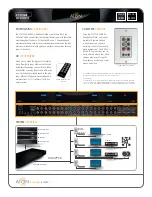
Chapter 1
Server Diagnostics
1-13
The Solaris Predictive Self Healing technology does not monitor the hard drive for
faults. As a result, the service processor does not recognize hard drive faults, and
will not light the fault indicators on either the chassis or the hard drive itself. Use the
Solaris message files to view hard drive faults. See
Section 1.6 “Collecting
Information From Solaris OS Files and Commands” on page 1-15
.
1.5
Using the Solaris Predictive Self Healing
Feature
The Solaris Predictive Self Healing (PSH) technology enables the server to diagnose
problems while the Solaris OS is running, and mitigate many problems before they
negatively affect operations.
The Solaris OS uses the fault manager daemon,
fmd(1M)
, which starts at boot time
and runs in the background to monitor the system. If a component generates an
error, the daemon handles the error by correlating the error with data from previous
errors and other related information to diagnose the problem. After diagnosed, the
fault manager daemon assigns the problem a Universal Unique Identifier (UUID)
that distinguishes the problem across any set of systems. When possible, the fault
manager daemon initiates steps to self-heal the failed component and take the
component offline. The daemon also logs the fault to the
syslogd
daemon and
provides a fault notification with a message ID (MSGID). You can use the message
ID to get additional information about the problem from Sun’s knowledge article
database.
The Predictive Self Healing technology covers the following server components:
■
Processor
■
Memory
■
I/O bus
The PSH console message provides the following information:
■
Type
■
Severity
■
Description
■
Automated response
■
Impact
■
Suggested action for system administrator
If the Solaris PSH facility detects a faulty component, use the
fmdump
command to
identify the fault. Faulty FRUs are identified in fault messages using the FRU name.















































